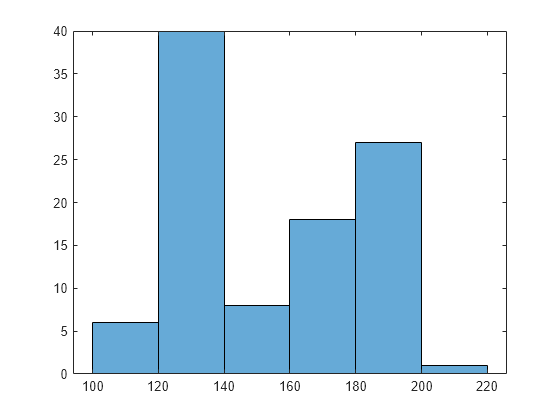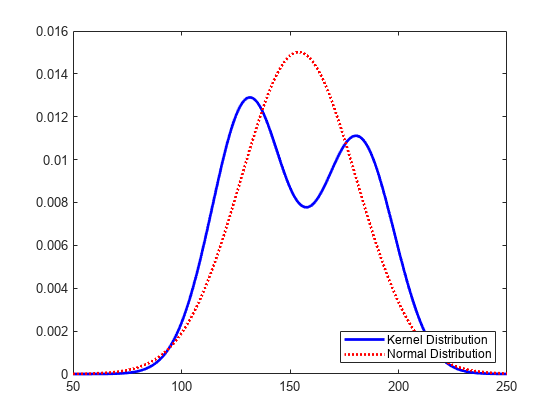KernelDistribution
Kernel probability distribution object
Description
A KernelDistribution object consists of parameters, a model
description, and sample data for a nonparametric kernel-smoothing
distribution.
The kernel distribution is a nonparametric estimation of the probability density function (pdf) of a random variable.
The kernel distribution uses the following options.
| Option | Description | Possible Values |
|---|---|---|
Kernel | Kernel function type | normal, box,
triangle,
epanechnikov |
Bandwidth | Kernel smoothing parameter | Bandwidth > 0 |
Creation
There are several ways to create a KernelDistribution probability
distribution object.
Fit a distribution to data using
fitdist.Interactively fit a distribution to data using the Distribution Fitter app.
Properties
Object Functions
cdf | Cumulative distribution function |
gather | Gather properties of Statistics and Machine Learning Toolbox object from GPU |
icdf | Inverse cumulative distribution function |
iqr | Interquartile range of probability distribution |
mean | Mean of probability distribution |
median | Median of probability distribution |
negloglik | Negative loglikelihood of probability distribution |
pdf | Probability density function |
plot | Plot probability distribution object |
random | Random numbers |
std | Standard deviation of probability distribution |
truncate | Truncate probability distribution object |
var | Variance of probability distribution |
Examples
Extended Capabilities
Version History
Introduced in R2013a

